- Sep 22, 2013
- 4,956
- 250
- 85
This is a media-billboard I made inspired by L.A. Story.
Thanks for reading,
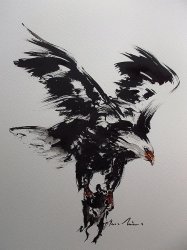
====
American media-radicals started reading the Bible and writing about the gender-symbolism of Biblical heroines such as Ruth and Mary Magdalene. They compared these Biblical women to American comic book superheroines of the modern age, including Wonder Woman, Catwoman, Firestar, and She-Ra. These media-radicals considered them the prophets who would end terrorism, even if their official underground 'stance' was pro-IRA. This was the contradiction of modern civilization --- aesthetics without refinement.

Alternative orthodoxies suggested the cure to modern madness was a return to classic art and apocalypse-oriented Christian paintings of the revelation. They even allowed for social discourse (controlled) about the provocative-but-controversial Satanism-voyeurism Roman Polanski film The Ninth Gate. These new age intellectuals wanted metaphysics to reblend into pedestrian consciousness in the era of Wall Street and Facebook!
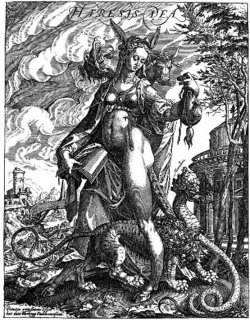
Americans loved consumerism and relics from the Big '80s such as toylike compact audio cassettes which included pre-recorded songs or were completely blank. These archaeological relics might be sold on eBay by sellers capitalizing on a modern spiritual backlash involving the selling and merchandising of culturally-symbolic totems (or 'toys')! The Biblical heroines referenced by modern media-radicals including Mary Magdalene were having their metaphysical environments literally re-presented in the Dan Brown adapted Da Vinci Code film-series. This was the time of the portable audiobook (to play on your Sony Walkman), so how involved in commercial aesthetics design would comic book superheroines such as Wonder Woman and anti-heroines such as Poison Ivy find themselves through evolution-symbolism?

American kids loved Disney wrist-watches (of Cinderella, the Chipmunks, and Mickey Mouse). They were wed to the notion that consumerism was indeed imaginative and that toys were not part of some terrible Orwellian inevitability. These kids would be exposed to Wonder Woman, Catwoman, and Spider-Woman cartoons, but they would continue to think of pop-literature such as vigilante-fantasy crime-fighting detective stories with outlandish 'superhuman' characters more as 'toys' than as 'trophies.' Kids and adults found some common ground for the first time ever arguably, but would MTV cynicism and Wall Street greed turn consumerism into an invisible circus?
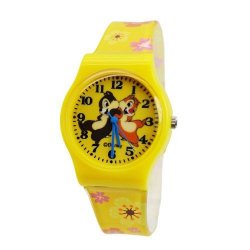
As expected, the two Hindu gods Shiva and Vishnu were involved in a powerful debate about the intellectual value of evaluating the aesthetics of consumerism and thinking of fast-food not only as 'convenience-marketing' but also as 'hospitality-economics' (of an advanced nature!). Shiva was the destroyer, while Vishnu was the protector, so they disagreed about the nature of modern ethics, but they did agree about the potency of new age 'toys.' Could children inspire adults more now than ever?
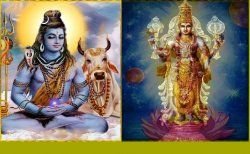
SHIVA: Are you a fan of Sheena (Queen of the Jungle)?
VISHNU: I prefer Wonder Woman, superheroine from the Amazon!
SHIVA: Are you a fan of Carrie (Stephen King)?
VISHU: I prefer Christine (Stephen King).
SHIVA: Are you cynical about Cover Girl?
VISHNU: I'm not opposed to cosmetics and like Harley Quinn (DC Comics).
SHIVA: Harley Quinn is an extraordinary anti-heroine; criminally-insane.
VISHNU: Yes, she symbolizes urban intelligence presented to a mass audience.
SHIVA: I agree; Harley Quinn reminds us that gender-politics can be humorous!
VISHNU: Her sardonic lines are representative of a unique brand of 'modernism cynicism.'
SHIVA: You can forgive cynicism by calling it nihilism; are you a fan of Batman films?
VISHNU: Let's return to our topic; is Mary Magdalene comparable to Poison Ivy?
SHIVA: 'Comparable' must mean objective contouring and then censorship is unnecessary.
VISHNU: I suppose this is the age of mob conversation(!).
SHIVA: What humbles me most is the aesthetic magic of Disney wrist-watches.
VISHNU: They're family-and-values-friendly but not representative for adult consumerism.
SHIVA: Disney wrist-watches are not worn by businessmen in NYC, but they're still iconic.
VISHNU: However, Apple Computers (toylike in design!) are popular among businessmen.
SHIVA: That is interesting...I suggest that Disney pioneered this aesthetics movement(!).
VISHNU: Alright; I'll buy you a silver Disney wrist-watch for Christmas.
SHIVA: I'll invite you to my Yale summer lecture about Lancelot and Mordred.
VISHNU: Cheers,
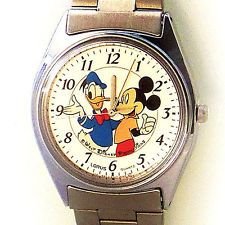
"Was this the age of media and merchandising? Had aesthetics become a form of merchandise? Were consumer brands the new society beacons of shared spirituality (or lack thereof)? Was globalized consumerism the official victory-trumpet of the Christian capitalists competing with the atheist communists? Was commerce a 'face' of good or evil? Media-radicals would claim that all this toy-factory obsession would simply destroy American credibility..."
====


Thanks for reading,

====
American media-radicals started reading the Bible and writing about the gender-symbolism of Biblical heroines such as Ruth and Mary Magdalene. They compared these Biblical women to American comic book superheroines of the modern age, including Wonder Woman, Catwoman, Firestar, and She-Ra. These media-radicals considered them the prophets who would end terrorism, even if their official underground 'stance' was pro-IRA. This was the contradiction of modern civilization --- aesthetics without refinement.

Alternative orthodoxies suggested the cure to modern madness was a return to classic art and apocalypse-oriented Christian paintings of the revelation. They even allowed for social discourse (controlled) about the provocative-but-controversial Satanism-voyeurism Roman Polanski film The Ninth Gate. These new age intellectuals wanted metaphysics to reblend into pedestrian consciousness in the era of Wall Street and Facebook!

Americans loved consumerism and relics from the Big '80s such as toylike compact audio cassettes which included pre-recorded songs or were completely blank. These archaeological relics might be sold on eBay by sellers capitalizing on a modern spiritual backlash involving the selling and merchandising of culturally-symbolic totems (or 'toys')! The Biblical heroines referenced by modern media-radicals including Mary Magdalene were having their metaphysical environments literally re-presented in the Dan Brown adapted Da Vinci Code film-series. This was the time of the portable audiobook (to play on your Sony Walkman), so how involved in commercial aesthetics design would comic book superheroines such as Wonder Woman and anti-heroines such as Poison Ivy find themselves through evolution-symbolism?

American kids loved Disney wrist-watches (of Cinderella, the Chipmunks, and Mickey Mouse). They were wed to the notion that consumerism was indeed imaginative and that toys were not part of some terrible Orwellian inevitability. These kids would be exposed to Wonder Woman, Catwoman, and Spider-Woman cartoons, but they would continue to think of pop-literature such as vigilante-fantasy crime-fighting detective stories with outlandish 'superhuman' characters more as 'toys' than as 'trophies.' Kids and adults found some common ground for the first time ever arguably, but would MTV cynicism and Wall Street greed turn consumerism into an invisible circus?

As expected, the two Hindu gods Shiva and Vishnu were involved in a powerful debate about the intellectual value of evaluating the aesthetics of consumerism and thinking of fast-food not only as 'convenience-marketing' but also as 'hospitality-economics' (of an advanced nature!). Shiva was the destroyer, while Vishnu was the protector, so they disagreed about the nature of modern ethics, but they did agree about the potency of new age 'toys.' Could children inspire adults more now than ever?

SHIVA: Are you a fan of Sheena (Queen of the Jungle)?
VISHNU: I prefer Wonder Woman, superheroine from the Amazon!
SHIVA: Are you a fan of Carrie (Stephen King)?
VISHU: I prefer Christine (Stephen King).
SHIVA: Are you cynical about Cover Girl?
VISHNU: I'm not opposed to cosmetics and like Harley Quinn (DC Comics).
SHIVA: Harley Quinn is an extraordinary anti-heroine; criminally-insane.
VISHNU: Yes, she symbolizes urban intelligence presented to a mass audience.
SHIVA: I agree; Harley Quinn reminds us that gender-politics can be humorous!
VISHNU: Her sardonic lines are representative of a unique brand of 'modernism cynicism.'
SHIVA: You can forgive cynicism by calling it nihilism; are you a fan of Batman films?
VISHNU: Let's return to our topic; is Mary Magdalene comparable to Poison Ivy?
SHIVA: 'Comparable' must mean objective contouring and then censorship is unnecessary.
VISHNU: I suppose this is the age of mob conversation(!).
SHIVA: What humbles me most is the aesthetic magic of Disney wrist-watches.
VISHNU: They're family-and-values-friendly but not representative for adult consumerism.
SHIVA: Disney wrist-watches are not worn by businessmen in NYC, but they're still iconic.
VISHNU: However, Apple Computers (toylike in design!) are popular among businessmen.
SHIVA: That is interesting...I suggest that Disney pioneered this aesthetics movement(!).
VISHNU: Alright; I'll buy you a silver Disney wrist-watch for Christmas.
SHIVA: I'll invite you to my Yale summer lecture about Lancelot and Mordred.
VISHNU: Cheers,

"Was this the age of media and merchandising? Had aesthetics become a form of merchandise? Were consumer brands the new society beacons of shared spirituality (or lack thereof)? Was globalized consumerism the official victory-trumpet of the Christian capitalists competing with the atheist communists? Was commerce a 'face' of good or evil? Media-radicals would claim that all this toy-factory obsession would simply destroy American credibility..."
====

